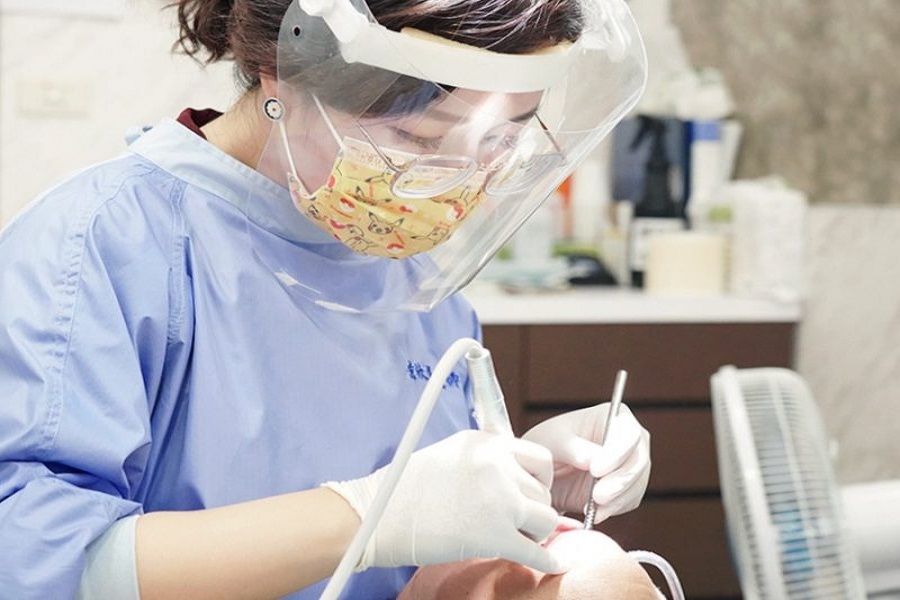Heard of periodontitis, so have you heard of gingivitis? What is gingivitis? In medicine, the soft tissue surrounding and covering the teeth is called gingiva, and the acute and chronic inflammation that occurs in the gingival tissue is called gingivitis. It is manifested as gingival bleeding, redness, swelling and pain, and continues to develop and invade the hard tissue, resulting in periodontitis, including inflammation of the gingival tissue and the performance of systemic diseases in the gingiva. Today, I will tell you about the clinical symptoms of gingivitis. 1. Bleeding gums: It is often the main symptom of patients with gingivitis, which mostly occurs when brushing teeth or biting hard objects, and occasionally there may be spontaneous bleeding. 2. Gum color: Normal gums are pink, and free gums and gingival papilla become dark red or dark red when suffering from gingivitis, which is due to the congestion and hyperplasia of blood vessels in the connective tissue of the gums. 3. Gum shape: Normal gums should be thin and close to the tooth surface. When suffering from gingivitis, due to tissue edema, the gingival margin becomes thicker and no longer close to the tooth surface. Stick again. In patients with inflammation and exudation as the main lesions, the gingiva is soft and hypertrophic, with a bright surface, and the gingival margin is sometimes eroded and exuded; in the case of fibrous proliferation, the gingiva is tough and hypertrophic, and sometimes can be nodular and cover part of the tooth surface . 4. Gum texture: Due to the infiltration of inflammation in the connective tissue and the disappearance of collagen fibers, the original dense gums become soft and fragile and lack elasticity. In some chronic inflammations, the gingival surface epithelium proliferates and thickens, and collagen fibers proliferate, making the gingival surface appear hard and hypertrophic, but the inner wall of the periodontal pocket is inflamed, and there is bleeding on probing. 5. Depth of periodontal pocket: When the periodontal tissue is healthy, the depth of periodontal pocket is generally not more than 2-3mm. When there is inflammatory swelling or hyperplasia of the gums, the gingival sulcus can be deepened by more than 3mm, forming a false periodontal pocket. 6. Bleeding on probing: Healthy gums do not bleed when brushing or probing the sulcus. Gingivitis bleeds on the touch and bleeds on probing. Bleeding after probing is an important objective indicator for diagnosing the presence or absence of gingival inflammation. 7. Increased gingival crevicular fluid: When the gums are inflamed, the gingival crevicular fluid exudation increases, and the white blood cells in it also increase significantly. Some patients may also have gingival crevicular pus. Therefore, measuring the amount of gingival crevicular fluid can be used as an indicator to judge the degree of inflammation. 8. Some patients occasionally feel discomfort such as local itching and swelling of the gums, as well as bad breath.
Advertisements
What are the clinical manifestations of gingivitis?
Advertisements
Related Posts
Popular Articles
Are Wisdom Teeth Removal Covered By Dental Insurance?
Wisdom teeth, or third molars, are the last set of teeth to emerge in the mouth, typically appearing between the...
Latest Posts
Tags
alveolar bone bad breath black teeth bleeding gums cold light whitening crooked teeth cure dental care dental implant dental implants Dental Insurance dentures discolored teeth disease gingivitis Gum Disease misaligned teeth oral disease orthodontic orthodontic care orthodontics orthodontic treatment periodontal disease periodontitis permanent teeth porcelain teeth teeth teeth cleaning teeth white teeth whitening teeth whitening methods Teeth Whitening Strips tooth tooth decay tooth extraction tooth filling ultrasonic cleaning underbite whitening whitening toothpaste white teeth wisdom teeth wisdom teeth extraction wisdom tooth yellow teeth

Panda Oral – oral and dental health consultants around you, providing orthodontic, tooth whitening, dental implants, scaling, filling, extraction, dental implants, dental caries, wisdom teeth, bad breath, bleeding gums, oral ulcers, periodontal disease for patients with dental diseases It can help you solve oral problems easily.【Contact us: [email protected]】
Recent News
- How is Cavity Formed in Teeth 04/19/2025
- 14 Way to Stop Cavities from Getting Worse 04/19/2025
- 10 Solid Foods You Can Eat After Wisdom Tooth Extraction 04/19/2025
Copyright © 2023 PANDA ORAL - Oral_Oral health_oral hygiene_oral care_dental health_dental oral surgery





























